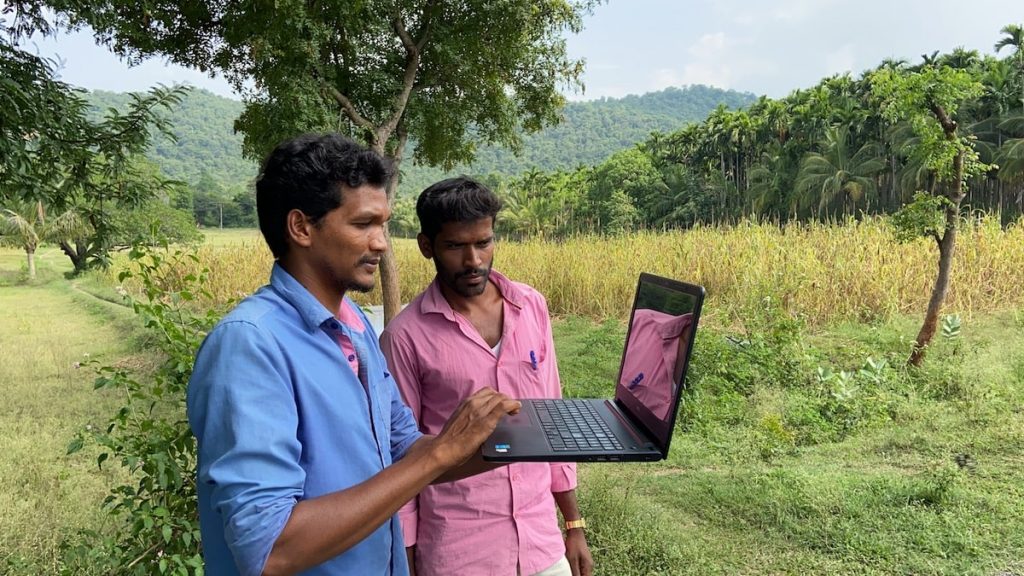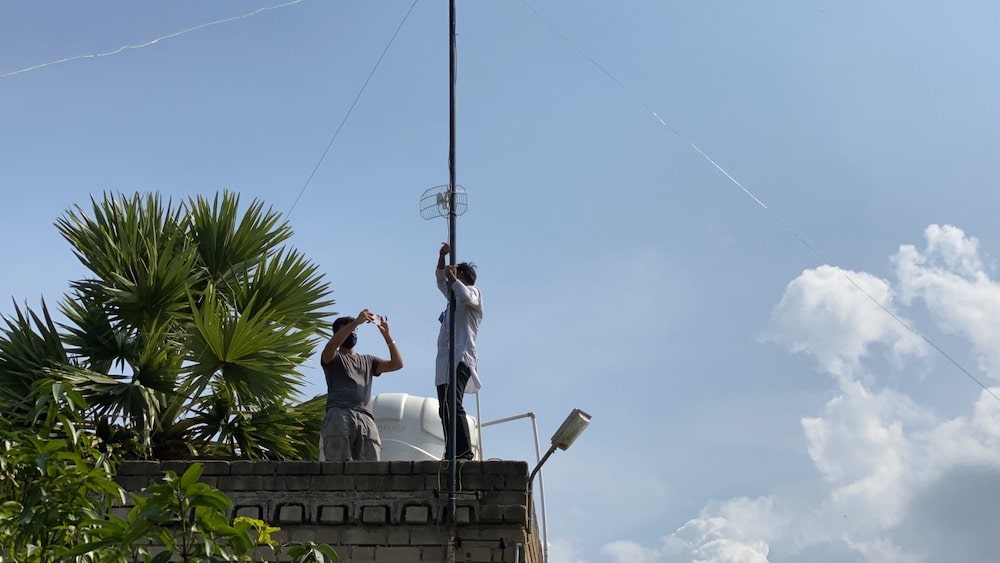It’s been decades since the development of the Internet. Yet there are still many people around the world without any kind of connectivity. Some villages don’t know about popular services like Facebook, WhatsApp, and Instagram, and there are tribal communities who have lived their whole lives completely unconnected to the outside world. When information as vital as health and education is not able to reach everyone, it is cause for concern. Sittlingi – a tribal village 270 kilometers from Chennai, the capital of the State of Tamil Nadu, India – is a place where sending an email message once meant traveling for a full day.
In 1992 Dr. Regi George and Dr. Lalitha Regi moved to the village, in the valley of the Kalrayan hills, and set up an organization called the Tribal Health Initiative. Their vision was to improve the lives of the people in Sittlingi. Almost 30 years later, they have expanded into a team of over 70 highly trained people, furthering their mission through a variety of programs in health care, community health, farming, and craft work.
They aimed to improve lives through four initiatives: a tribal hospital, a crafts center, a farmer’s unit, and a school. The tribal hospital now serves the local community, providing them with an excellent healthcare facility that is affordable, reaching 15 other villages in the Sittlingi valley and serving around 16,000 people. The Porgai crafts center supports the local Lambada tribal community and acts as the link between their products and the market; they have a physical shop where they sell products made by local women, which empowers them and helps them become self-reliant. The farmer’s unit, Sittlingi Organic Farmers Association, supports about 500 local farmers. The school gives children in the tribal community access to education.

Not having connectivity was always an inconvenience for Sittlingi. When the Tribal Health Initiative was founded, the nearest telephone booth was a four-hour drive away – making a single phone call would take a whole day. With the advent of the Internet and floppy drives, their work became easier. It still took a four-hour trip, but people in the community could carry floppy drives to Salem, sit in an Internet café, and copy all their email messages. Once back in Sittlingi, they could write replies offline, return with the floppy drives to the Internet café in Salem, and send their messages, carrying the next lot back home.
A few years later, the Internet finally came within reach in the region. By then people had laptops and could carry them to a village about 20 kilometers away, where there was a 2G Internet connection. It was still a whole day’s affair, this time via jeep to the village, where online work could be completed under a tree before heading back by the evening.

In 2019 the Sittlingi valley finally got a semblance of connectivity. There was patchy Internet, and a few spots would catch mobile service. The tribal hospital was able to get online, enhancing its ability to provide care. They were able to connect complicated medical cases to expert doctors in Chennai or other parts of the world through video calling.
However, the school, the crafts center, and the farmer’s unit were still unconnected. For people used to relying on the Internet and people living in cities, this was cause for worry. But for the Tribal Health Initiative this was hardly an issue. That is, until the break of the COVID-19 pandemic.
Suddenly Sittlingi felt even more unconnected to the outside world than it had before. Sales of Porgai went down by 80%. Farmer’s produce, like tamarind and other organic products, no longer had a market, and children’s education came to a halt. After having lived with the bare minimum amount of connectivity for the last 28 years, the Tribal Health Initiative realized its importance in today’s world.
“It was all the more urgent that we get Internet when the pandemic happened. The pandemic left us completely dependent on it and we didn’t have access to it,” said Dr. Regi George.
The Digital Empowerment Foundation (DEF) and the Internet Society stepped in. They provided all four locations with a stable Internet connection, using free unlicensed spectrum and putting up masts that connect to each other, working as a local network.
“Indigenous communities are the most unconnected communities in the age of Internet so any opportunity to connect them, especially using frugal technologies like wireless mesh networking, gives an opportunity to not only bring them to the mainstream but also enrich the world wide web with the diverse culture and knowledge of these communities,” said the director of Digital Empowerment Foundation, Osama Manzar.
“We measured the distances and checked the locations. It was a little challenging to connect since there are trees all around, so they come in the way of the line of sight. But we managed. Finally, this region that was completely unconnected now has Internet. All the locations have been connected,” said Mudassir Ansari, DEF’s community network engineer.

This connectivity will help Porgai come back on track in terms of sales, enabling the women to become self-reliant again. It will also help the local farmers sell their produce to people outside the community, as more and more people are appreciating the value of organic products. Internet connectivity will also aid the children in their education during COVID-19. However, above all this, the Internet connection is a bridge between the Sittlingi valley and the outside world, democratizing information and ensuring access to it.
Rajnesh Singh, regional vice-president, Asia-Pacific at the Internet Society said, “the experience of this community clearly demonstrates why connectivity is critical – even for those who seemingly don’t have an immediate need. A whole new world of social and economic development opportunities can be enabled by the Internet, more so for those who are yet to benefit from being online.”
“It was like a celebration, you know? Getting connectivity,” said Dr. Lalitha Regi, the manager of Porgai.

